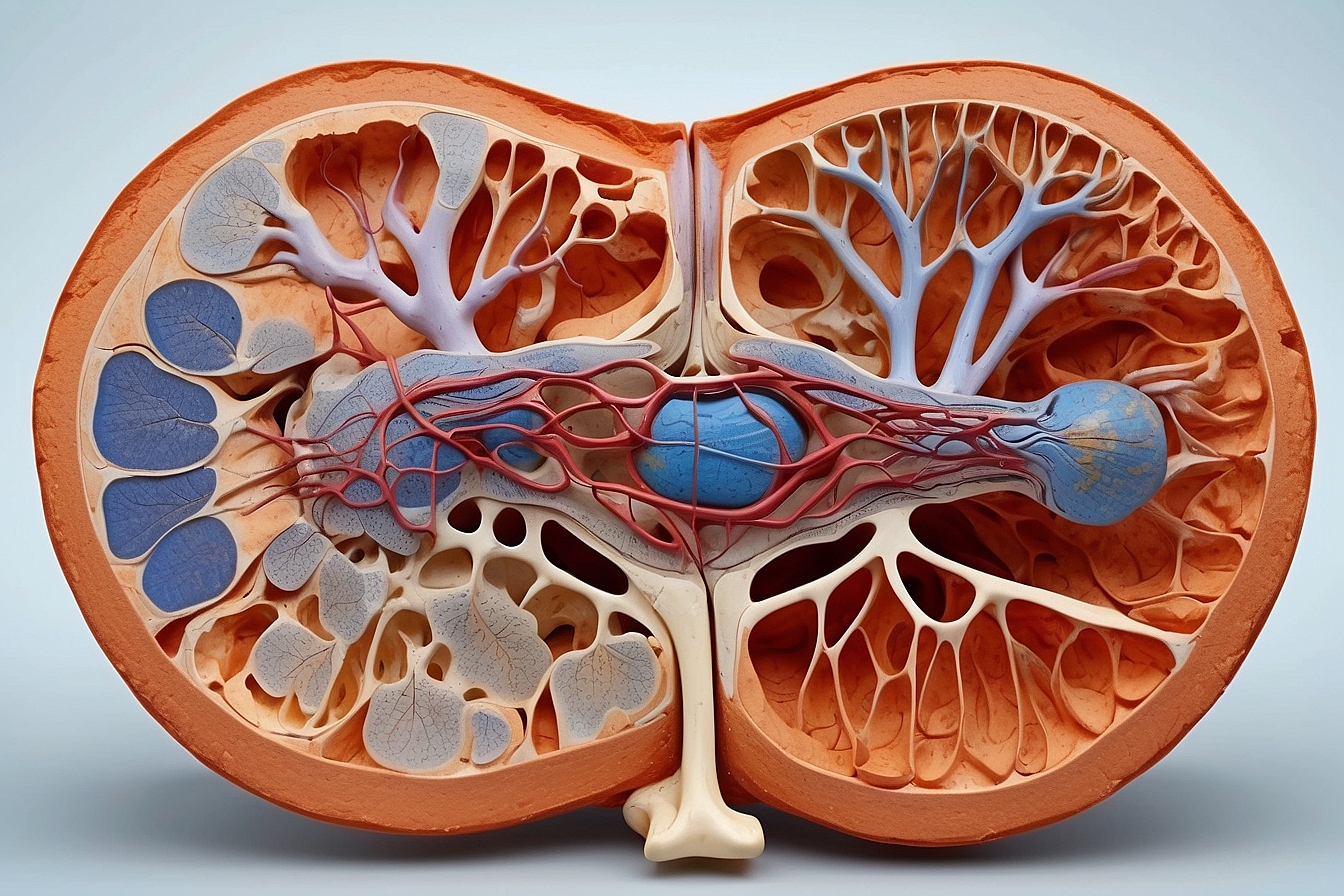
Situated above the kidney, the adrenal gland is a petite triangular organ composed of two distinct sections: the adrenal cortex and the adrenal medulla.
Within the adrenal cortex, steroid hormones such as glucocorticoids, mineralocorticoids, and adrenal androgens are produced.
Conversely, the adrenal medulla is responsible for synthesizing the catecholamines, namely epinephrine and norepinephrine.
This intricate division of labor underscores the gland’s crucial role in hormonal regulation within the body.
- Read also: Cerebral Hemorrhage vs. Stroke
- Read also: Understanding Spastic vs. Dyskinetic Cerebral Palsy
What is the Adrenal Cortex?
The adrenal cortex serves as the outer region of the adrenal gland, comprising approximately 85% of its total weight.
This crucial component plays a pivotal role in synthesizing steroid hormones, essential for regulating diverse bodily functions.
Structurally, the cortex is organized into three layers:
- The zona glomerulosa: Responsible for specific hormone production
- The zona fasciculate: Generates distinct hormones
- The zona reticularis: specializing in the synthesis of unique hormones.
These layers collectively contribute to the intricate orchestration of hormones that govern vital organ functions and various physiological processes within the body.

What is the Function of Adrenal Cortex?
The adrenal cortex plays a vital role in regulating diverse bodily functions through the production of steroid hormones.
These hormones, namely glucocorticoids, mineralocorticoids, and adrenal androgens, exert specific influences on various physiological processes.
Glucocorticoids, exemplified by cortisol, contribute to the regulation of metabolism, immune response, and the body’s reaction to stress.
Mineralocorticoids, typified by aldosterone, play a key role in maintaining salt and water balance.
Additionally, adrenal androgens, including dehydroepiandrosterone (DHEA), contribute to the development of secondary sexual characteristics.
In essence, the adrenal cortex orchestrates a finely tuned hormonal symphony, crucial for the overall equilibrium and functioning of the body.
What is the Medulla?
The adrenal medulla forms the inner portion of the adrenal gland, contributing around 10% to the gland’s overall weight.
Its primary function is the synthesis of catecholamines, specifically epinephrine and norepinephrine.
What is the Function of Medulla?
The medulla, situated in the inner part of the adrenal gland, is responsible for producing vital hormones called catecholamines, namely epinephrine and norepinephrine.
These hormones play a pivotal role in the body’s stress response, commonly known as the “fight or flight” reaction.
They exert control over crucial functions such as metabolism, blood sugar levels, blood pressure, and heart rate, orchestrating a coordinated physiological response during challenging or stressful situations.
What is the Difference between Adrenal Cortex and Medulla?

The adrenal cortex and medulla are functionally distinct and produce different hormones that regulate various bodily functions.
The key differences between the adrenal cortex and medulla are summarized in the table below:
| Adrenal Cortex | Adrenal Medulla |
| The outer part of the adrenal gland |
The inner part of the adrenal gland
|
| Constitutes about 85% of the gland’s weight |
Constitutes about 10% of the gland’s weight
|
| Produces steroid hormones, including glucocorticoids, mineralocorticoids, and adrenal androgens |
Produces the catecholamines, epinephrine, and norepinephrine
|
| Regulates metabolism, immune response, stress response, salt and water balance, and development of secondary sexual characteristics |
Regulates stress response, metabolism, blood sugar levels, blood pressure, and heart rate
|
- Read also: Neurotypical vs. Neurodivergent Brains
- Read also: Understanding Different Types of Cerebral Edema
Conclusion
In conclusion, the adrenal gland is made up of two parts: the adrenal cortex and the adrenal medulla.
The adrenal cortex produces steroid hormones, including glucocorticoids, mineralocorticoids, and adrenal androgens, while the medulla produces catecholamines, epinephrine, and norepinephrine.
These hormones play crucial roles in maintaining salt balance, metabolism regulation, and the development of secondary sexual characteristics, as well as in the body’s stress response.
Understanding the differences between the adrenal cortex and medulla is important in the diagnosis and treatment of disorders of the adrenal gland.
FAQs
The adrenal gland is a small triangular organ located above the kidney. It is made up of two parts: the adrenal cortex and the adrenal medulla.
The adrenal cortex produces steroid hormones that regulate various bodily functions, including metabolism, immune response, stress response, salt and water balance, and development of secondary sexual characteristics.
The adrenal medulla produces catecholamines, epinephrine, and norepinephrine, which are involved in the body’s stress response. They control many important functions, including metabolism, blood sugar levels, blood pressure, and heart rate.
The adrenal cortex produces steroid hormones, including glucocorticoids, mineralocorticoids, and adrenal androgens, while the medulla produces catecholamines, epinephrine, and norepinephrine.



